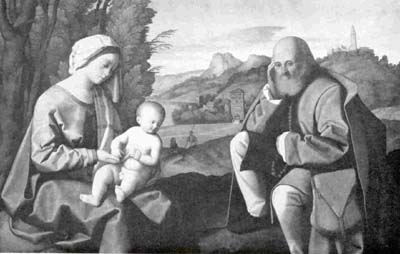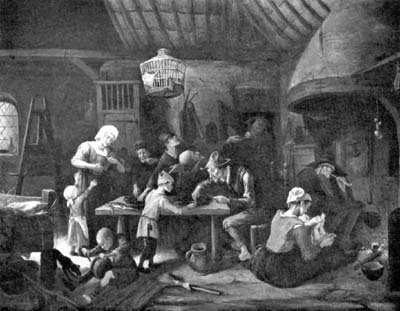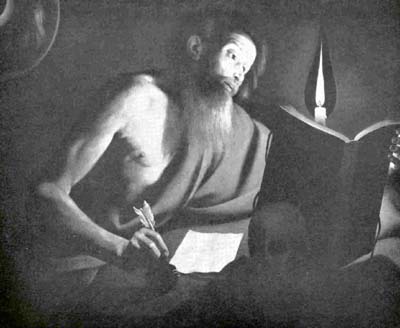
Bulletin 1 (I:1) May 1963
Home
Français
Introduction
History
Annual Index
Author &
Subject
Credits
Contact



A Review of Accessions since
the Catalogues of 1957 and 1959
European
and American Painting and Sculpture
by R. H. Hubbard, Chief Curator
Résumé en français
Pages 1
| 2 | 3
The current catalogues of the National Gallery of Canada's holdings in
the older European and modern European schools were published in
1957 and 1959 respectively. In the interval before the publication
of new editions a brief discussion of recent additions to the
collection may serve as a supplement to the volumes now in print.
The present article gathers up some of my contributions to several
of the Gallery's annual reports and adds some new material.
The earliest work added to the older European schools since 1957
is an Italian relief, The Virgin and Child, carved about 1485
by the Master of the Marble Madonnas. The exact identity of this
artist is still obscure, though his artistic personality is defined
in a series of marble reliefs in the Victoria and Albert Museum,
London, the National Gallery of Art, Washington, and the
Metropolitan Museum, New York, in addition to the work in question.
Though he was mainly active at Urbino he was closely related to the
circles of Antonio Rossellino and Mino da Fiesole in Florence and
thus finds a place in the trend leading to Michelangelo. The newly
acquired relief with its original blue background and gold on the
ornaments produces an effect of impressive solemnity tempered by
touches of human tenderness, such as the Virgin fondling the Christ
Child's foot. The coats of arms at the lower left and right have
been tentatively identified (1) as those of a Dominican foundation and
the Montefeltro family respectively the latter suggesting that the
work was commissioned by Duke Federigo Montefeltro or another member
of that illustrious family. It was once in the collection of Baron
Achille Seillière at the Chateau de Mello (2) in France and later in
the Heugel collection, Paris. It constitutes the first important
piece of Italian Renaissance sculpture, formerly re-presented only
by a single small stucco by Desiderio da Settignano, to enter the
National Gallery.
The Holy Family in a Landscape, acquired in 1961, is a
work of the Venetian High Renaissance, painted about 1525 by
Vincenzo Catena (c. 1480-1531). The earliest reference to
this painter is in an inscription of 1506 on the back of Giorgione's
Laura in the Vienna Gallery, in which Giorgione is described
as a colleague of Catena. Catena's style, which confirms his
relationship to the master, also suggests the influence of other
Venetian painters including Giovanni Bellini and Cima da Conegliano,
as well as some from northern Europe and from Raphael in Rome. The
subject of the new National Gallery picture is probably a Rest on
the Flight into Egypt. But Catena, true to the poetic tradition of
Giorgione, has omitted the usual attributes, the toppled idol and
the rest, and represented the figures as a sacra conversazione. Though
Bernard Berenson early catalogued the picture as by Catena, (3) other
scholars attempted to attach it to the oeuvre of Palma Vecchio. (4) But
the thorough analysis given it by Mr Giles Robertson in his recent
study of Catena (5) makes the original attribution certain. He points
out that the same cartoon as was used here for the Virgin and Child
was also employed in the Dray ton House, Prague, and Messina
pictures by Catena. The new National Gallery picture has been in
several well known private collections (6) and was included in the
exhibition of Italian art at the Royal Academy, London, in 1930 (No.
376).
The representation of the schools of northern Europe has been
enriched by the purchase of two paintings. Adam and Eve in
Paradise is a characteristic work of Roeland Savery (1576-1639),
the leading member of a family of artists in the Low Countries. Born
at Courtrai, he was active in Amsterdam, Prague, and Vienna before
going to Utrecht where he died. He was a great favourite of his time
if not an innovator in art and was responsible for introducing the
Flemish style into the northern Netherlands. His subject-matter
included animals, flowers and (as here) the occasional religious and
mythological theme set in landscape.
The Lean Kitchen (7) is an appealing subject by Ian
Steen, (1626-1679) the popular Dutch painter of realistic genre
interpreted in a humorous, moralizing manner. With its assemblage of
half-starved peasants and animals in a hovel, the picture is a
pendant to The Fat Kitchen (with well fed people and animals)
in an American private collections. (8) Steen painted several
versions of these contrasting subjects. This is the first example of
a Dutch interior with figures to enter the National Gallery.
One of the principal purchases has been the St Jerome attributed
to Georges de la Tour (1593-1652) by Dr Hermann Voss and Dr Walter
Friedländer, (9) two of the scholars who helped to 'discover' this
unique French painter whose work is marked by deep religious feeling
and a melancholy, poetic mood. Little is known of his life, though
he was born at Vic-sur-Seille in Lorraine, by 1621 was active at
Luneville, and later painted for Louis XIII. In some way he
became acquainted with the 'dark manner' of Caravaggio, possibly
through contact with some of the latter's northern followers on a
visit to the Low Countries. He painted the St Jerome theme several
times. But another (and inferior) version of the new Ottawa picture,
in the Galleria Nazionale, Rome, has been attributed to Crijn
Hendricksz Volmarijn (c. 1604-1645) by Mr J. R. Judson (10) and
to the anonymous 'Candlelight Master' by Benedict Nicholson. (11) In
any case, it is an arresting work by virtue of its dramatic use
of colour and light and is the first example of the Candlelight
School to enter the Gallery. It was included in the
'Heritage de France' exhibition shown in several cities in Canada in
1961.
The link that was forged between the European and English schools
in the seventeenth century, when England under the Stuarts first
entered the main stream of European art, is illustrated in the
portrait of Lady Thynne by Cornelius Jonson (1593-1661). This
is the gift of Miss Armide Oppé and Mr Denis Oppé of London in
memory of their father, the late Paul Oppé who served as adviser to
the department of prints and drawings of the National Gallery of
Canada for many years before his death in 1957. Jonson (Johnson or
Janssens van Ceulen) was born in London, the son of a refugee from
the persecutions in Antwerp. He was probably trained under several
of the English portrait and miniature artists but was certainly
influenced by Van Dyck after the latter settled in England in 1632.
In 1643 Jonson fled the English Civil War and practised his
art in Amsterdam and in Utrecht, where he died. The Lady Thynne
dates from 1642.
Next Page | Scottish Painter Sir Henry
Raeburn
1 | 2
| 3
Annual Index | Author & Subject | Credits | Contact
This digital collection was produced
under contract to Canada's Digital Collections program, Industry Canada.
"Digital
Collections Program, Copyright
© National Gallery of Canada 2001"